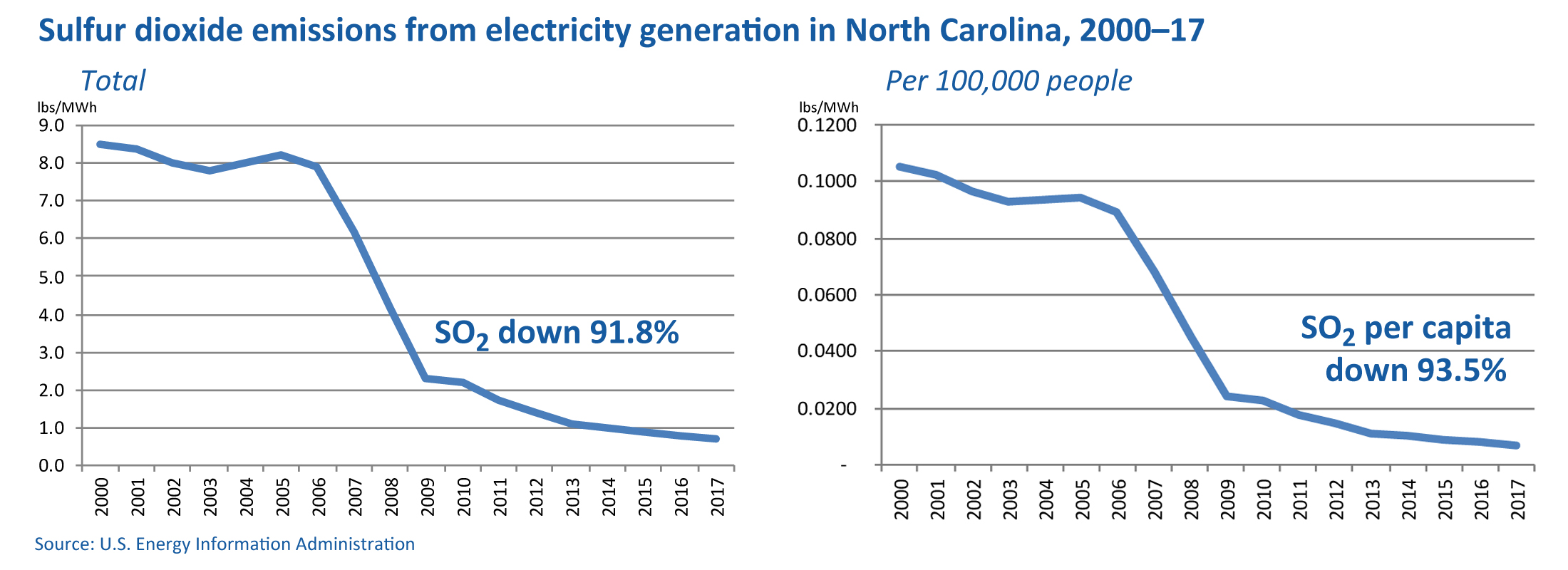This week, JLF’s Jon Sanders reported on North Carolina’s decreasing emissions. According to Sanders, since 2000, total carbon dioxide emissions have decreased by 37.5%, total sulfur dioxide emissions have decreased by 91.8%, and total nitrogen oxide emissions are down 74.2% (see images).



Sanders also included per capita measures this year. He notes:
while the nation’s CO2 emissions were at their lowest level since 1992, our CO2 emissions per capita were at their lowest rate since 1950.
Sanders notes that renewable energy sources are likely not the primary driver of this change. He explains:
Brookings [2016 economic growth and emissions] report included a brief note about renewable energy resources such as wind and solar. Those sources “have yet to register as broad an impact” as expected. It found, “this analysis does not find a strong statistical relationship between states’ emissions reductions and solar and wind’s share of power generation.”
In fact, the report found that in most of the states that saw the greatest growth of wind or solar in terms of the states’ share of electricity generation, “carbon emissions rose from 2001 and 2014, as well as in the period since 2008 when wind and solar development has taken place in the country.” (Emphasis added.)
Instead, Sanders credits the technological changes in the market that have transformed the energy sector. He writes:
Technological change is creating ever more efficient uses of resources. Consumer preferences are favoring less “carbon-intensive” goods and services. An expanding service sector is also resulting in lower emissions.
Most notably, the fracking revolution has made clean-burning natural gas more price-competitive with coal, so electric utilities have increasingly opted for gas as a fuel source. The other major market competitor with coal is nuclear, which has no emissions. Both of these are dispatchable, highly efficient energy sources that don’t eat up huge expanses of land or require expensive backup generation.
In this century, natural gas went from providing less than one percent (0.9 percent) of North Carolina’s electricity to rivaling nuclear for the top spot.
Technological advancements in clean and affordable energy sources such as fracking when well-planned and properly executed have the potential to lower emissions even further in the future.
Read the full brief here. Read Sanders’ full report on the trend of decreasing emissions here.


